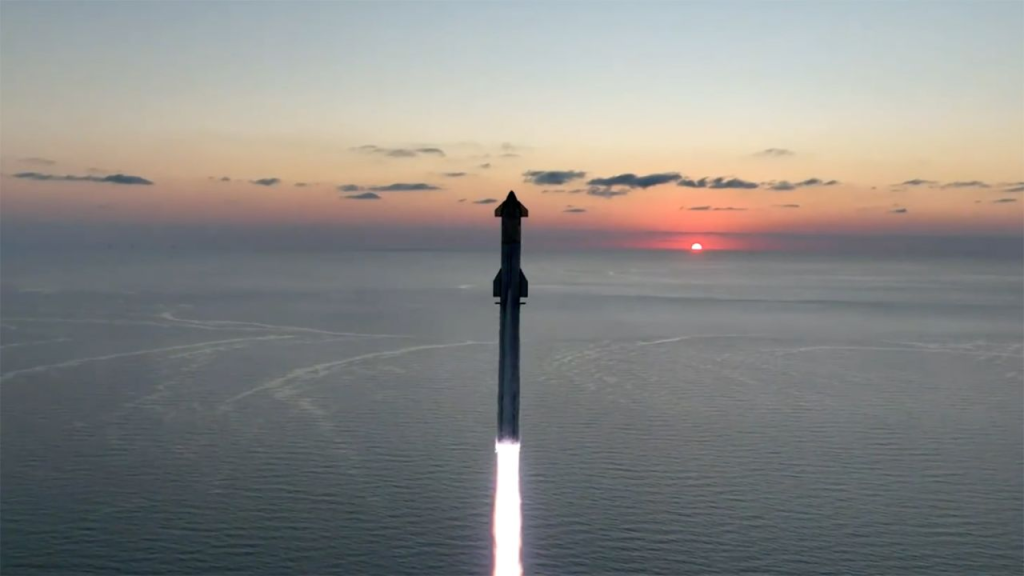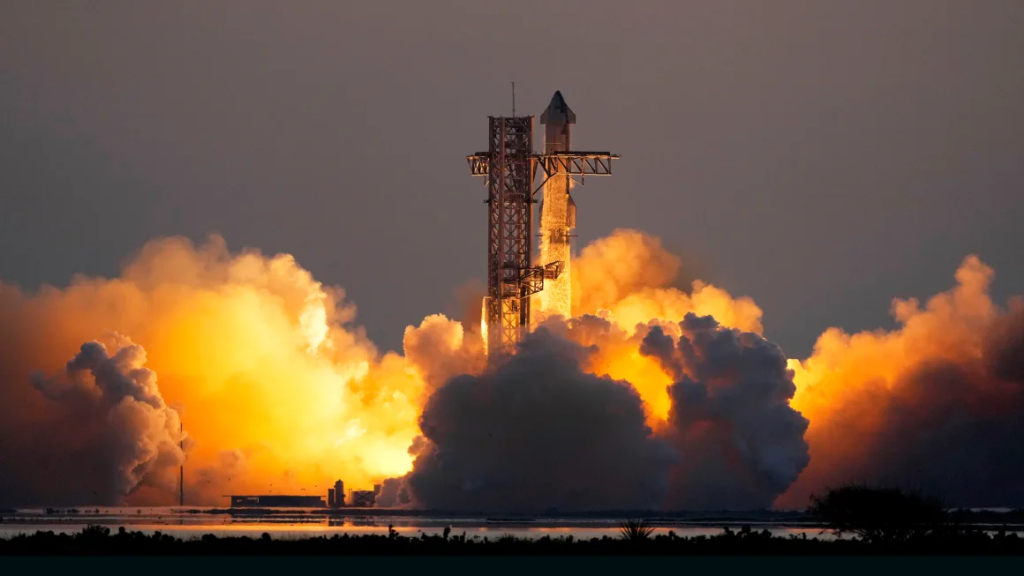The Launch SpaceX: A New Milestone for Space Travel
The SpaceX Starship launch on October 13 was another significant step in the company’s ongoing efforts to develop a fully reusable rocket system. Liftoff occurred at 8:25 a.m. ET, with the Super Heavy rocket booster powering the vehicle into the skies. This rocket, which stands taller than a 20-story building, is the most powerful booster ever created, boasting 33 engines that generate a staggering 16 million pounds of thrust.

For the first time, SpaceX attempted and succeeded in executing an unprecedented booster recovery maneuver. After propelling the Starship vehicle into space, the Super Heavy booster detached and returned to the launch site. In a spectacular feat of engineering, SpaceX used massive metal arms, referred to as “chopsticks,” to catch the booster mid-air, marking a pivotal moment in the company’s quest for rapid rocket reusability.

Starship’s Journey: Towards the Moon and Beyond
The SpaceX Starship spacecraft, which sits atop the Super Heavy booster, continued its journey after separation. Equipped with six powerful engines, Starship successfully performed a series of complex maneuvers in space, including a controlled descent over the Indian Ocean. While SpaceX did not recover the upper stage on this test flight, the spacecraft’s performance was a marked improvement over previous launches, where significant damage occurred upon re-entry.
The successful test of SpaceX Starship 5 is another step toward the vehicle’s future role in space exploration. NASA has selected Starship as the lunar lander for its Artemis program, which aims to land astronauts on the Moon by 2026. The ability to reuse both the Super Heavy booster and the Starship spacecraft is crucial for NASA’s Artemis 3 mission, and potentially for future missions to Mars.
The Importance of Reusability: Redefining Space Travel
The recovery and reuse of rocket components is a key part of SpaceX’s long-term vision for space travel. By rapidly refurbishing and relaunching rockets, SpaceX aims to significantly reduce the cost and time required to launch cargo and astronauts into space. The concept of rapid reusability, pioneered by SpaceX, has already been applied successfully to the Falcon 9 rocket, where boosters have been reused in multiple flights.
However, the Starship system is far more complex. With a height of 397 feet and twice the liftoff thrust of NASA’s Saturn V rocket, Starship represents the next generation of reusable launch vehicles. The ultimate goal for SpaceX is to enable a future where Starship can be refueled and relaunched within hours of a previous mission—an essential capability for long-term missions to the Moon and Mars.
SpaceX Starship 5: Paving the Way for Future Flights
With the successful launch of SpaceX Starship 5, the company has set the stage for future missions. While this test flight focused on recovering the Super Heavy booster, SpaceX plans to refine and perfect the landing techniques for the Starship spacecraft as well. Each test flight builds on the lessons of the previous ones, bringing SpaceX closer to its ultimate goal of fully reusable rockets.
The significance of SpaceX Starship extends beyond the commercial and governmental contracts it holds, such as its agreement with NASA to support lunar landings. The vehicle’s potential to revolutionize space travel lies in its sheer power and reusability, which could make long-term space missions to destinations like Mars a reality within our lifetime.
A Giant Leap Towards Space Exploration
The SpaceX Starship 5 launch is a major achievement in the ongoing development of the Starship system. With successful milestones such as the mid-air recovery of the Super Heavy booster, SpaceX is pushing the envelope on rocket reusability, a crucial component of its vision for deep-space exploration.
As SpaceX continues to refine the Starship system, the world watches in anticipation. From landing astronauts on the Moon through the Artemis mission to establishing the first human colonies on Mars, SpaceX is at the forefront of humanity’s next giant leap into the cosmos.


